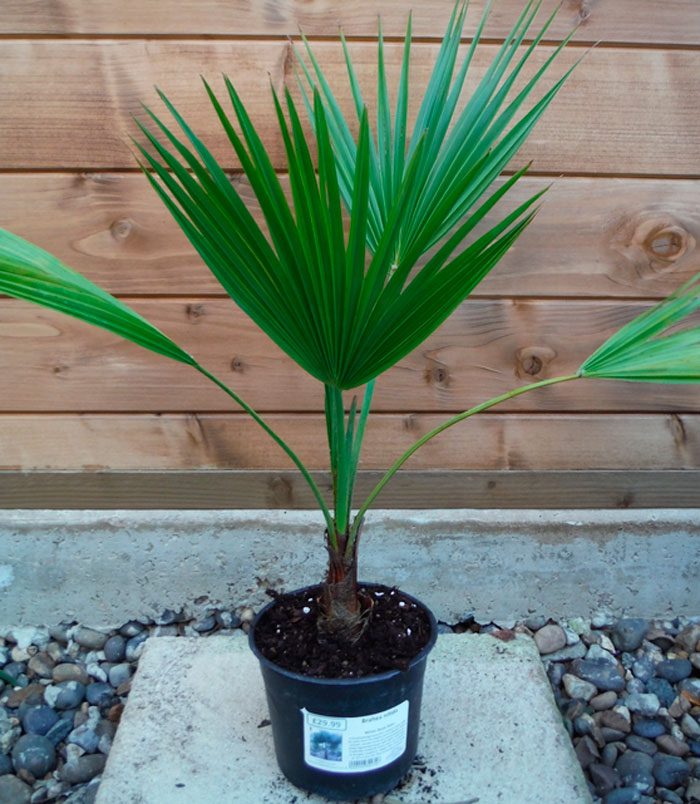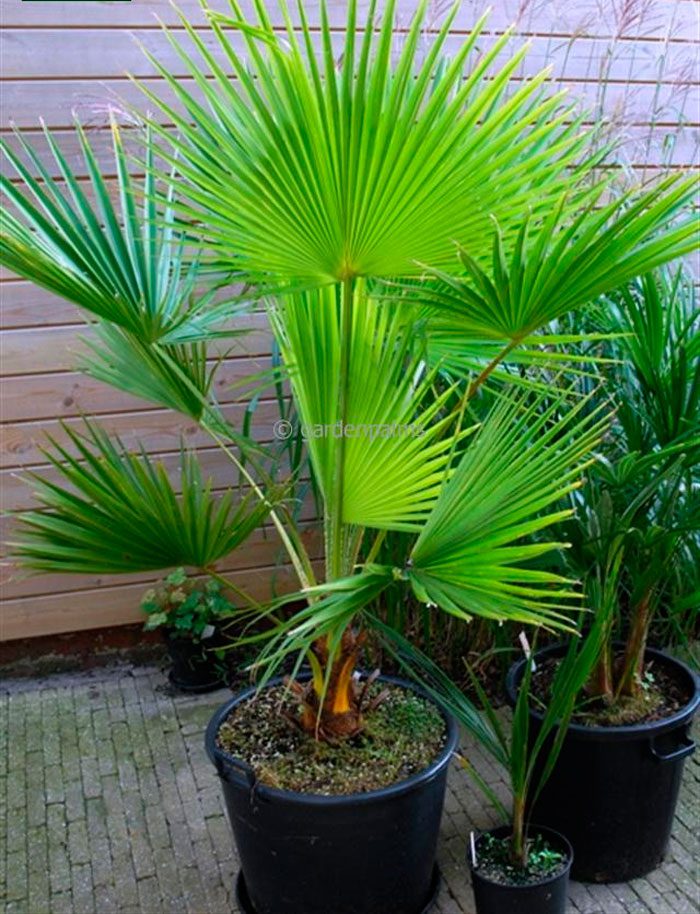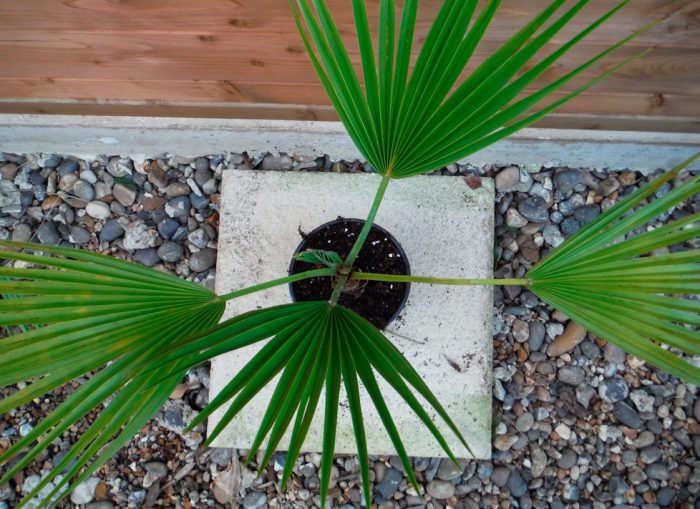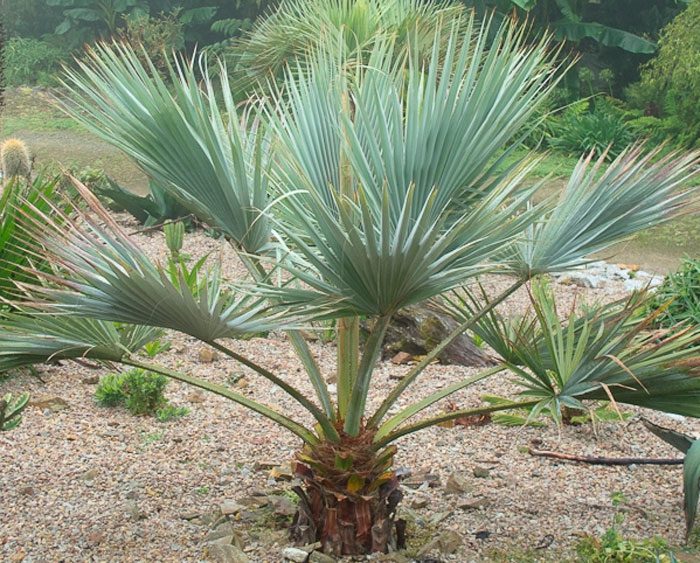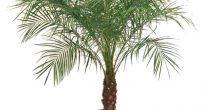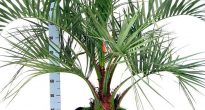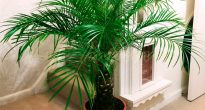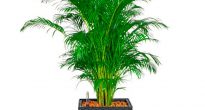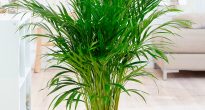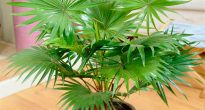Evergreen fan palm brachea (Brahea) is directly related to the palm family (Arecaceae, or Palmae). In nature, it can be found in the USA (California) and in Mexico. This plant was named in honor of the Dane Tycho Brahe (1546 - 1601), who was a well-known astronomer, and it was he who discovered this genus.
The trunk thickened at the base may have a diameter equal to no more than 50 centimeters. On the surface of the trunk, in its lower part, there are scars remaining from fallen leaves. In the upper part of the trunk there are very hard fan-shaped leaves. A distinctive feature of this genus is the bluish-gray color of the leaf plates. There are long, thin leaf petioles with thorns on the surface. When a plant begins its flowering period, it has a large number of inflorescences that can reach more than 100 centimeters in length. They fall from the crown to the ground surface. The single-seeded brown fruits are round in shape and reach a diameter of 2 centimeters. These palms are ideal for growing in large greenhouses and conservatories. But there are also more compact species that are quite suitable for growing indoors.
Content
Brachea care at home
Illumination
Such a plant develops best in a brightly lit, sunny place, but it is quite possible to grow it in partial shade. In summer, the palm must be protected from the direct scorching rays of the midday sun. In order for it to develop evenly, experts advise systematically turning the container with the plant so that the tip of the young leaf is directed into the room. In the summertime, it is recommended to move the palm tree outside.
Temperature regime
In the summer, it is recommended to keep the plant at a temperature of 20 to 25 degrees, and in the winter - from 10 to 15 degrees. For wintering, the plant can be transferred to a rather cold place, since it can withstand a temperature drop to minus 4 degrees.
Humidity
It is necessary to regularly moisten the foliage from the sprayer, as well as remove dust from the leaf plates.
How to water
Water sparingly throughout the year.
Transplant features
The transplant is carried out by the transshipment method 1 time in 2 or 3 years. If the root system is damaged even a little, then the palm tree will stop growing for a while, until the roots are restored, and this lasts long enough.
Earth mix
The soil mixture consists of sod and leafy soil, as well as sand, which must be taken in a 2: 2: 1 ratio. You can use commercial palm soil.
Top dressing
Top dressing is carried out in April – September 1 time in 2 weeks. To do this, use a liquid fertilizer for palms or a universal fertilizer for decorative deciduous plants.
Reproduction methods
Propagated by seeds. From the moment the seeds ripen, their good germination is maintained for 2–4 months. Seed preparation required. To do this, they are immersed in a growth stimulating agent for half an hour, and then for half a day - in tepid water with a fungicide dissolved in it. Sowing is carried out in a substrate consisting of humus, peat and sawdust, and over them is covered with a film. The temperature needs to be high (from 28 to 32 degrees). As a rule, the first shoots appear after 3 or 4 months, but sometimes this happens only after 3 years.
Pests and diseases
The plant can settle mealybug or spider mite... If the air is dry, the leaves turn yellow and their tips turn brownish.
Main types
Brachea armed (Brahea armata)
This fan palm is evergreen. On the surface of the trunk there is a layer of corky bark, as well as dried old leaf plates. Fan leaves in diameter can reach from 100 to 150 centimeters. They are cut up to half into 30-50 lobes. They are painted in a grayish-gray color, and on their surface there is a waxy coating. The length of the petiole varies from 75 to 90 centimeters. It is quite powerful, so, at the bottom, its width reaches 4–5 centimeters, and it gradually tapers towards the top to 1 centimeter. Cascading axillary inflorescences in length can reach from 4 to 5 meters. The color of the flowers is whitish-gray.
Brahea brandegeei
Such a palm is evergreen. It has a narrowed single barrel. The leaves have rather long petioles, on the surface of which there are thorns. The diameter of fan-shaped leaf plates can reach more than 100 centimeters and they have about 50 pieces of narrowed lobes. Their front surface is painted green, and the seamy surface is grayish blue. The narrowed panicle inflorescences bear small (1 cm in diameter) flowers of a cream color.
Brachea edible (Brahea edulis)
This fan palm is evergreen. Its trunk is painted dark gray, and on its surface there are scars left over from fallen leaves. The diameter of folded, fan-shaped leaves does not exceed 90 centimeters. The leaf blade itself is colored pale green and dissected into 60–80 lobes. The lobes are about 2.5 centimeters wide and taper towards the top. The fibrous petiole, smooth at the base, reaches 100 to 150 centimeters in length. The axillary inflorescence can be up to 150 centimeters long. The diameter of the fruit varies from 2 to 2.5 centimeters. Its pulp can be eaten.

